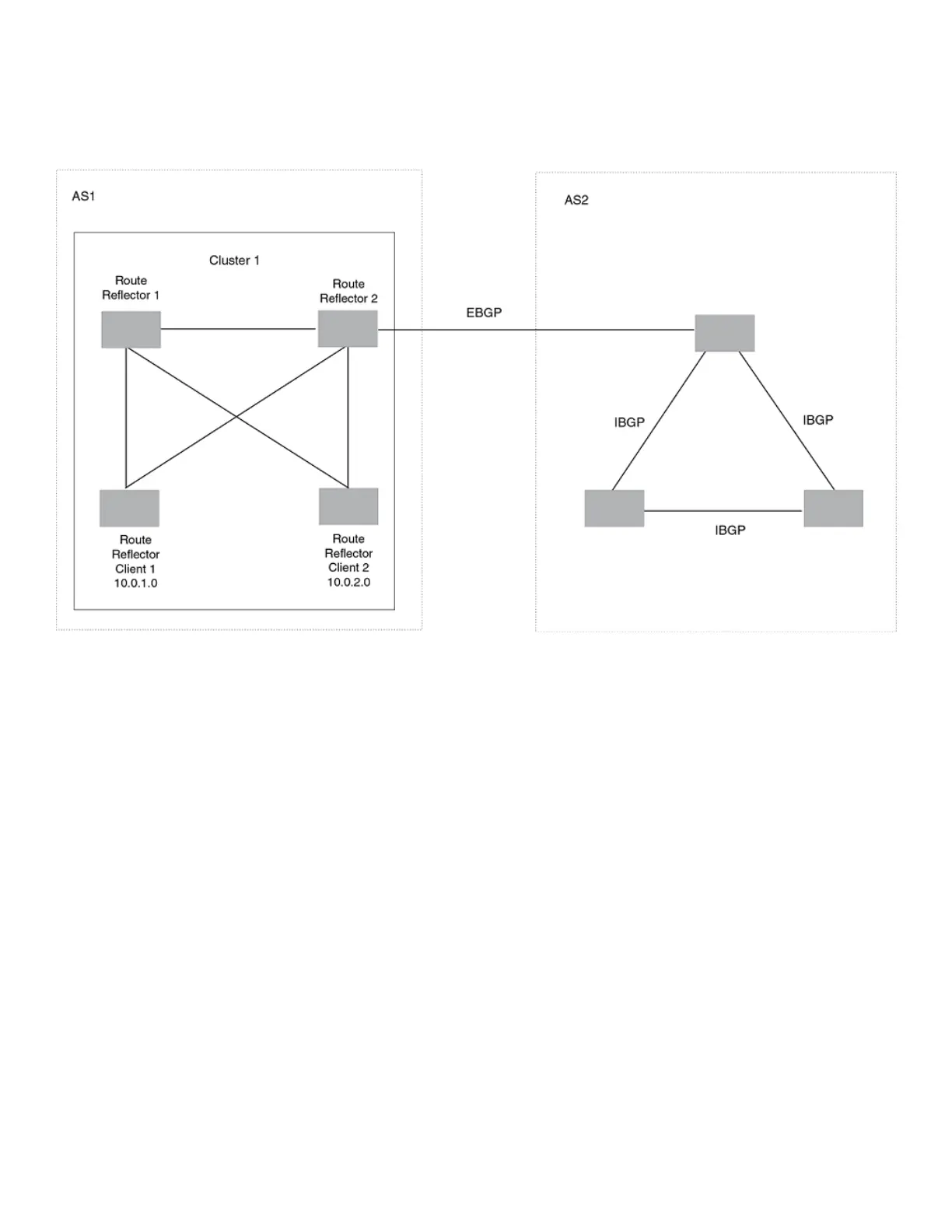FIGURE 31 A route reector conguration
Support for RFC 4456
Route reection on Brocade devices is based on RFC 4456. This updated RFC helps eliminate routing loops that are possible in some
implementations of the older specication, RFC 1966. These instances include:
• The device adds the route reection attributes only if it is a route reector, and only when advertising IBGP route information to
other IBGP neighbors. The attributes are not used when communicating with EBGP neighbors.
• A device congured as a route reector sets the ORIGINATOR_ID attribute to the device ID of the device that originated the
route. The route reector sets this attribute only if this is the rst time the route is being reected (sent by a route reector).
• If a device receives a route with an ORIGINATOR_ID attribute value that is the same as the ID of the device, the device discards
the route and does not advertise it. By discarding the route, the device prevents a routing loop.
• The rst time a route is reected by a device congured as a route reector, the route reector adds the CLUSTER_LIST
attribute to the route. Other route reectors that receive the route from an IBGP neighbor add their cluster IDs to the front of the
routes CLUSTER_LIST. If the route reector does not have a cluster ID congured, the device adds its device ID to the front of
the CLUSTER_LIST.
• If a device congured as a route reector receives a route with a CLUSTER_LIST that contains the cluster ID of the route
reector, the route reector discards the route.
Conguration procedures for BGP4 route reector
To congure a Brocade device to be a BGP4 route reector, use either of the following methods.
Optional BGP4 conguration tasks
FastIron Ethernet Switch Layer 3 Routing
390 53-1003627-04

